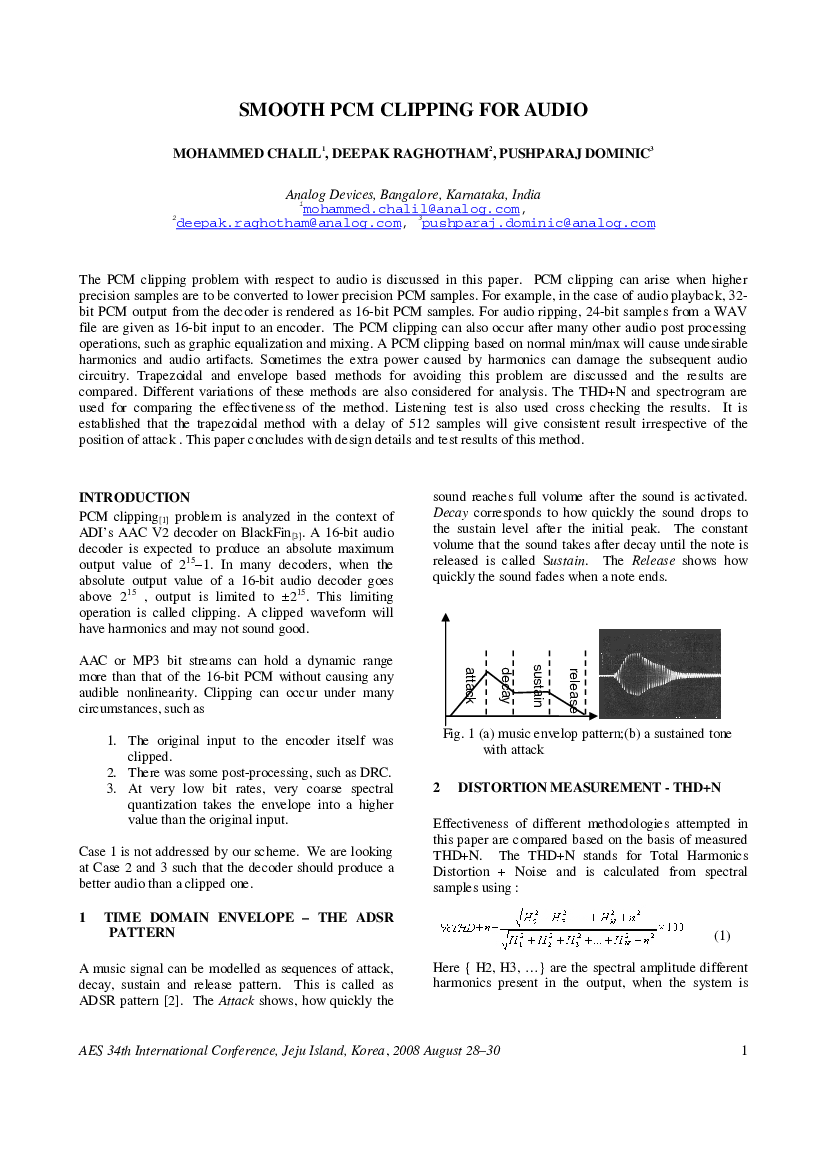Home / Publications / E-library page
You are currently logged in as an
Institutional Subscriber.
If you would like to logout,
please click on the button below.
Home / Publications / E-library page
Only AES members and Institutional Journal Subscribers can download
The PCM clipping problem with respect to audio is discussed in this paper. PCM clipping can arise when higher precision samples are to be converted to lower precision PCM samples. For example, in the case of audio playback, 32-bit PCM output from the decoder is rendered as 16-bit PCM samples. For audio ripping, 24-bit samples from a WAV file are given as 16-bit input to an encoder. The PCM clipping can also occur after many other audio post processing operations, such as graphic equalization and mixing. A PCM clipping based on normal min/max will cause undesirable harmonics and audio artifacts. Sometimes the extra power caused by harmonics can damage the subsequent audio circuitry. Trapezoidal and envelope based methods for avoiding this problem are discussed and the results are compared. Different variations of these methods are also considered for analysis. The THD+N and spectrogram are used for comparing the effectiveness of the method. Listening test is also used cross checking the results. It is established that the trapezoidal method with a delay of 512 samples will give consistent result irrespective of the position of attack . This paper concludes with design details and test results of this method.
Author (s): Chalil, Mohammed;Dominic, Pushparaj;Raghotham, Deepak
Affiliation:
Analog Devices
(See document for exact affiliation information.)
Publication Date:
2008-08-06
Import into BibTeX
Session subject:
Audio for Mobile & Handheld Devices: Implementations
Permalink: https://aes2.org/publications/elibrary-page/?id=14420
(547KB)
Click to purchase paper as a non-member or login as an AES member. If your company or school subscribes to the E-Library then switch to the institutional version. If you are not an AES member Join the AES. If you need to check your member status, login to the Member Portal.

Chalil, Mohammed;Dominic, Pushparaj;Raghotham, Deepak; 2008; Smooth PCM Clipping for Audio [PDF]; Analog Devices; Paper 11; Available from: https://aes2.org/publications/elibrary-page/?id=14420
Chalil, Mohammed;Dominic, Pushparaj;Raghotham, Deepak; Smooth PCM Clipping for Audio [PDF]; Analog Devices; Paper 11; 2008 Available: https://aes2.org/publications/elibrary-page/?id=14420